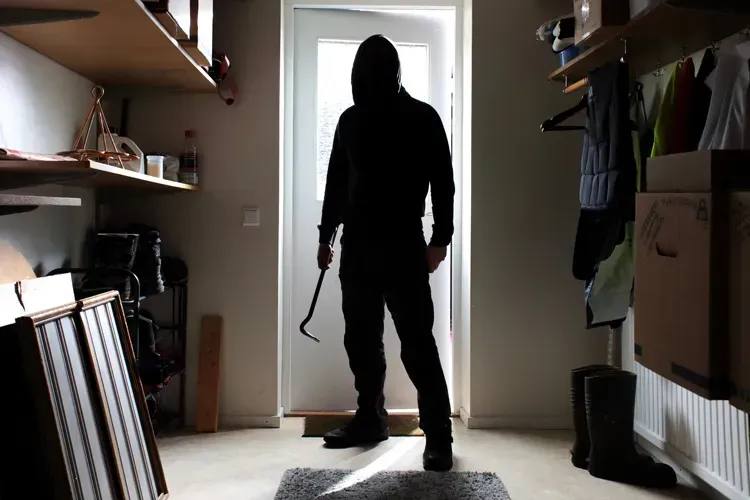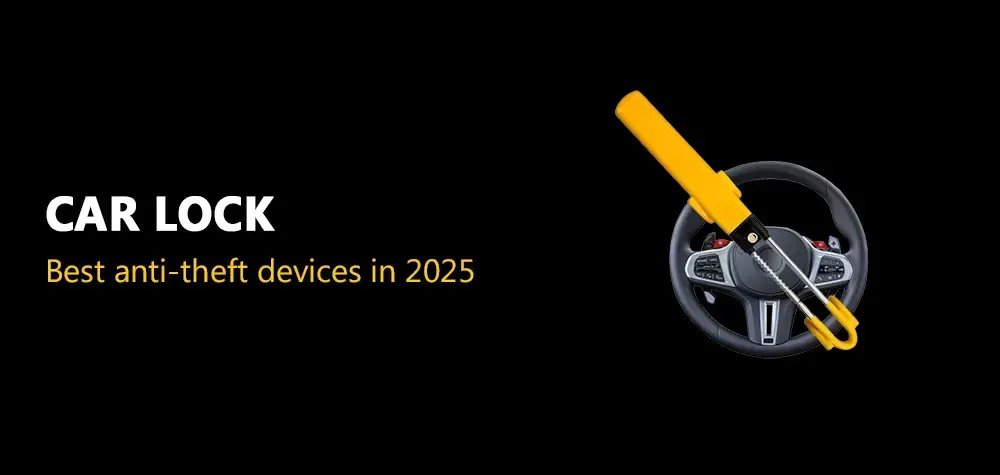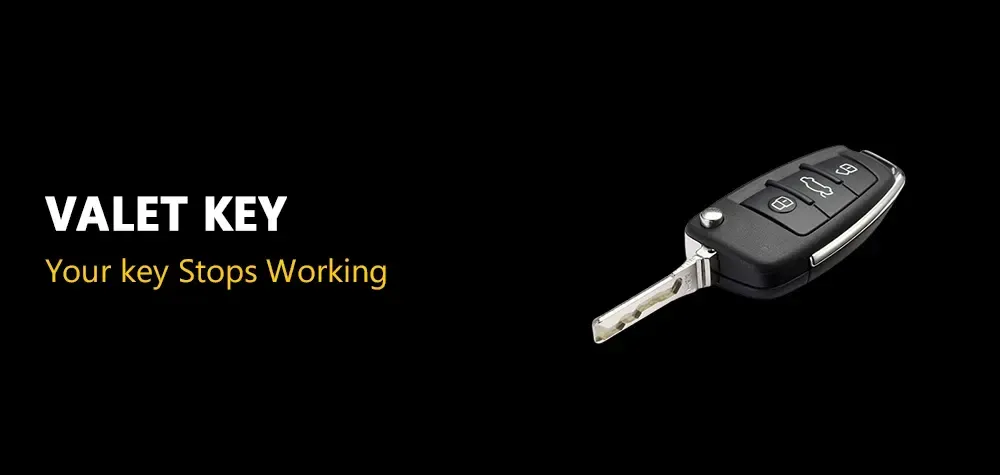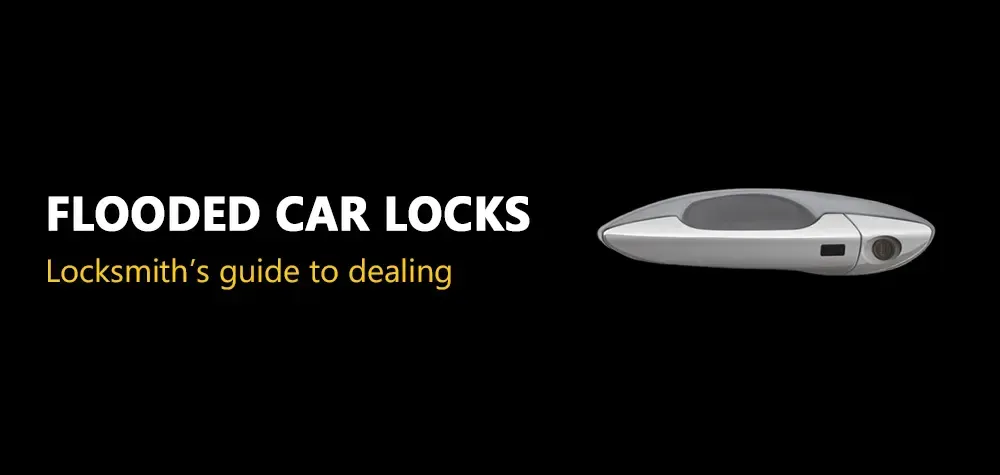How to Deter Burglars
Understanding Burglary Deterrence
Protecting Property and Valuables
Protecting your property and valuables is paramount in deterring burglars. Burglaries not only result in the loss of material possessions but can also have a significant financial and emotional impact on individuals and families. By implementing effective burglary prevention measures, you can safeguard your belongings and reduce the risk of theft. This includes securing valuable items in a safe, installing security systems, and taking steps to fortify your home's entry points. By prioritizing the protection of your property, you can create a secure environment for yourself and your loved ones.
Read more about Signs your house has been marked!
Ensuring Personal Safety and Security
In addition to safeguarding property and valuables, burglary prevention is crucial for ensuring personal safety and security. Burglaries can pose a threat to the physical well-being of individuals and occupants within a home. Intruders may resort to violence or confrontation if they encounter resistance during a break-in, putting residents at risk of harm. By implementing effective burglary prevention measures, such as installing security alarms and reinforcing doors and windows, you can create a safer living environment for yourself and your family. Prioritizing personal safety and security is essential for maintaining peace of mind and protecting against potential threats.
Motivation and Opportunity
Understanding the psychological factors behind burglary involves examining the motivations and opportunities that drive individuals to commit such crimes. Burglars are often motivated by various factors, including financial gain, substance abuse, or the desire to acquire valuable items. Additionally, individuals may turn to burglary as a means of addressing financial difficulties or fulfilling immediate needs. The opportunity to commit burglary arises when properties are perceived as vulnerable or easy targets due to insufficient security measures. Factors such as poorly lit areas, lack of surveillance, or unsecured entry points can increase the likelihood of a successful burglary. By addressing both the motivation and opportunity aspects, effective burglary prevention strategies can be developed to deter potential intruders and protect against property crimes.
Risk vs. Reward for Burglars
For burglars, the decision to engage in criminal activities often involves assessing the risk versus the potential rewards associated with their actions. The perceived risks of burglary may include the likelihood of detection, the presence of security measures, or the potential consequences of getting caught.
Conversely, the rewards of burglary may involve the acquisition of valuable items, financial gain, or the fulfillment of immediate needs. Burglars may weigh these factors carefully before targeting a property, considering the potential benefits against the potential risks involved. Implementing effective burglary prevention measures can help tip the scales in favor of risk, making properties less attractive targets for would-be intruders. By increasing the perceived risks and reducing the potential rewards, individuals can deter burglars and protect their homes and belongings from theft.

Home Security Measures
Adequate Lighting
Proper exterior lighting is a fundamental aspect of home security, as it deters burglars by eliminating hiding spots and increasing visibility. Well-lit areas around the perimeter of the property, including entry points such as doors and windows, make it challenging for intruders to approach undetected. Motion-activated lights can be particularly effective, illuminating the area when motion is detected, alerting homeowners to potential threats, and startling would-be burglars. Additionally, lighting timers or smart lighting systems can create the appearance of occupancy, even when residents are away, further enhancing security.
Surveillance Cameras
Surveillance cameras serve as both a deterrent and a means of capturing evidence in the event of a burglary or trespassing incident. Visible cameras positioned strategically around the exterior of the home act as a deterrent, signaling to potential intruders that the property is under surveillance and increasing the risk of detection. Furthermore, modern surveillance systems often include features such as motion detection, night vision, and remote access via smartphones or computers, allowing homeowners to monitor their property in real-time and receive alerts of suspicious activity. In the event of a burglary, footage from surveillance cameras can provide valuable evidence for law enforcement and aid in the apprehension of suspects.
Visible Signage
Visible signage, such as security system decals, serves as an effective deterrent against burglars by conveying the presence of security measures and deterring potential intruders. Placing signs or decals from reputable security companies near entry points, such as doors and windows, sends a clear message to would-be burglars that the property is protected. Even if homeowners do not have a security system installed, the mere presence of these signs can create doubt and hesitation in the minds of criminals, leading them to reconsider targeting the property. Additionally, signage indicating the presence of surveillance cameras or alarm systems reinforces the notion that the property is actively monitored and protected, further dissuading burglars from attempting a break-in.
Security System Decals
Security system decals, often provided by security companies to their customers, are specifically designed to be prominently displayed on doors and windows. These decals typically feature the logo or branding of the security company, along with messages indicating the presence of an alarm system or surveillance cameras. The highly visible nature of these decals serves as a visual deterrent, alerting potential intruders that the property is equipped with security measures. Burglars are less likely to target homes displaying these decals, as they prefer targets that pose minimal risk of detection or apprehension. Even if homeowners do not have a security system installed, displaying these decals can create the perception of enhanced security and may deter burglars from attempting a break-in.
Entry Point Security
Ensuring the security of entry points, such as doors and windows, is crucial in deterring burglars and preventing unauthorized access to the property.
High-Quality Door Locks
Investing in high-quality door locks is a fundamental aspect of entry point security. Deadbolts, in particular, provide robust protection against forced entry attempts. Grade 1 deadbolts, which are the highest industry standard, offer superior strength and durability compared to lower-grade alternatives. Additionally, smart locks equipped with advanced features such as keyless entry and remote access can further enhance security by allowing homeowners to monitor and control access to their property from anywhere.
Reinforced Windows and Doors
Reinforcing windows and doors with sturdy materials and additional security measures is essential for preventing forced entry. Installing impact-resistant glass or adding security film to windows can increase their resistance to breakage, making it more difficult for burglars to gain access. Similarly, reinforcing door frames and hinges and installing security bars or grilles can significantly improve the security of entry doors, effectively thwarting intrusion attempts.
Security Alarms
Implementing a comprehensive security alarm system provides an additional layer of protection against unauthorized entry. Alarm systems equipped with sensors for doors, windows, and motion detection can detect and alert homeowners to any attempted breaches. Audible alarms and visual indicators, coupled with remote monitoring capabilities, not only deter burglars but also notify homeowners and authorities of potential threats in real-time, allowing for swift response and intervention.
Landscape Design
Creating a well-thought-out landscape design is an effective way to enhance the security of your property by minimizing potential hiding spots for intruders and improving visibility around your home.
Trimmed Shrubs and Bushes
Overgrown shrubs and bushes provide ideal hiding spots for burglars to conceal their activities. Regularly trimming and maintaining vegetation around your property helps eliminate these hiding places and reduces the risk of unauthorized access. Keeping shrubs and bushes neatly trimmed also enhances the overall aesthetic appeal of your landscape.
Clear Sightlines
Maintaining clear sightlines throughout your property is essential for maximizing visibility and deterring potential intruders. Trim trees and branches that obstruct views of entry points, such as doors and windows, to eliminate blind spots where burglars could hide. By ensuring unobstructed sightlines, you increase the chances of detecting suspicious activity and preventing unauthorized access to your home.
No Hiding Places for Intruders
Strategically design your landscape to minimize hiding places for intruders by avoiding dense vegetation or cluttered areas near entry points. Opt for open spaces and well-lit pathways that provide clear lines of sight from the street and neighboring properties. Incorporating features such as gravel pathways or decorative rock beds can deter trespassers by limiting concealment options and making it more difficult to approach your home unnoticed.
Learn more about Dealing with lost or stolen keys!
Neighborhood Watch and Community Involvement
Engaging in neighborhood watch programs and fostering a sense of community involvement are effective strategies for deterring burglars and enhancing overall security within residential areas.
Neighborhood Watch Programs
Participating in neighborhood watch programs involves residents collaborating to create a network of vigilance and support aimed at preventing crime in their community. By working together and maintaining open lines of communication, neighbors can effectively monitor their surroundings and promptly report any suspicious activity to local authorities.
Collaboration Among Residents
Encouraging collaboration among residents is essential for the success of neighborhood watch initiatives. Establish regular meetings or communication channels where neighbors can discuss safety concerns, share information about recent incidents, and coordinate efforts to address security challenges collectively.
Reporting Suspicious Activity
Empowering residents to report any suspicious activity to law enforcement is crucial for maintaining a proactive approach to crime prevention. Encourage neighbors to trust their instincts and report any unusual behavior or suspicious individuals observed in the neighborhood promptly. Timely reporting allows authorities to investigate potential threats and take appropriate action to prevent criminal activity.
Building Community Relationships
Building strong relationships within the community fosters a sense of unity and mutual support among residents. Organize social events, block parties, or neighborhood gatherings to provide opportunities for neighbors to interact, get to know each other better, and build trust. A closely-knit community is more likely to watch out for one another and collectively address security concerns.
Getting to Know Neighbors
Encourage residents to take the initiative to get to know their neighbors and establish rapport with those living nearby. Building personal connections fosters a sense of trust and cooperation, making it easier to communicate about security issues and collaborate on neighborhood watch efforts.
Sharing Information and Resources
Facilitate the sharing of information and resources among residents to enhance community safety. Create platforms or online groups where neighbors can exchange tips, share updates on local safety issues, and access resources related to crime prevention, home security measures, and emergency preparedness. By pooling their knowledge and resources, residents can better protect their neighborhood from potential threats.
Learn more about Types of locks and their application!
Home Automation and Technology
Integrating smart home security systems and advanced technological solutions can significantly enhance the security and convenience of residential properties, providing homeowners with greater control and peace of mind.
Smart Home Security Systems
Smart home security systems offer comprehensive protection by combining various devices and sensors to monitor and secure the premises. These systems typically include features such as door and window sensors, motion detectors, and security cameras, all connected to a central hub that allows for remote monitoring and control via smartphone apps or computer interfaces.
Remote Monitoring and Control
One of the key benefits of smart home security systems is the ability to monitor and control the security of your home from anywhere, at any time. Whether you're at work, traveling, or simply away from home, remote access enables you to view live camera feeds, receive instant alerts for suspicious activity, and arm or disarm the security system remotely, providing peace of mind and ensuring prompt response to potential threats.
Motion-Activated Lights and Alarms
Motion-activated lights and alarms serve as effective deterrents against intruders by illuminating dark areas and alerting homeowners to unexpected movements around their property. Integrated with smart home security systems, these devices can be programmed to activate automatically in response to motion detected by outdoor sensors, effectively deterring burglars and enhancing overall security.
Video Doorbells
Video doorbells offer advanced surveillance and communication capabilities, allowing homeowners to see and interact with visitors remotely via their smartphone or tablet. Equipped with built-in cameras, motion sensors, and two-way audio, these devices provide real-time video feeds of visitors at the door, enabling homeowners to verify identities, communicate with delivery personnel, or deter potential intruders, even when they're not home.
Real-Time Video Surveillance
Advanced security cameras equipped with real-time video surveillance capabilities offer continuous monitoring of the property, capturing high-definition footage of any suspicious activity or unauthorized access. Paired with cloud storage and mobile access, homeowners can remotely view live or recorded video feeds, receive instant alerts for detected motion or security breaches, and provide evidence to law enforcement if necessary.
Two-Way Communication with Visitors
Two-way communication features allow homeowners to interact with visitors at their doorstep, whether it's a delivery person, neighbor, or unexpected guest. By using the built-in microphone and speaker of video doorbells or smart security cameras, homeowners can communicate with visitors in real time, providing instructions, answering questions, or even deterring potential intruders by making their presence known, all from the convenience of their smartphone or mobile device.
Crime Prevention Strategies
Implementing effective crime prevention strategies is crucial for safeguarding your home and valuables from potential threats. By adopting proactive measures and staying prepared, homeowners can minimize the risk of burglary and enhance overall security.
Securing Valuables
Protecting valuable possessions is essential to prevent theft and loss. Consider investing in a high-quality safe or lockbox to securely store cash, jewelry, important documents, and other valuable items. Choose a safe with appropriate security features such as fire and water resistance, sturdy construction, and tamper-proof locks.
Safe Storage of Valuables
When storing valuables, opt for inconspicuous locations that are less likely to attract attention from intruders. Avoid keeping valuables in obvious places such as dresser drawers, jewelry boxes, or bedside tables. Instead, utilize hidden compartments, wall safes, or floor safes to conceal valuable items and minimize the risk of discovery during a burglary.
Inventory and Documentation
Maintaining a detailed inventory of your possessions and valuable assets is essential for insurance purposes and recovery in the event of theft. Take photographs or videos of valuable items, including serial numbers, descriptions, and purchase receipts. Store this documentation in a secure location, such as a safety deposit box or encrypted digital storage, to facilitate insurance claims and law enforcement investigations.
Home Security Assessment
Conducting a comprehensive home security assessment helps identify vulnerabilities and weaknesses in your property's defenses. Consider hiring a professional security consultant or locksmith to evaluate your home's security measures and recommend improvements. Assess factors such as door and window locks, outdoor lighting, surveillance cameras, alarm systems, and perimeter fencing to determine areas for enhancement.
Professional Evaluation of Vulnerabilities
A professional security assessment involves a thorough inspection of your home's exterior and interior, including entry points, windows, doors, landscaping, and lighting. Security experts can identify potential weaknesses in your current security setup and provide tailored recommendations to fortify your home against burglary and intrusion.
Implementing Recommendations for Improvement
Based on the findings of the security assessment, implement recommended security enhancements to strengthen your home's defenses. This may involve upgrading door and window locks, installing security cameras and motion sensors, reinforcing entry points with heavy-duty hardware, and improving outdoor lighting to deter intruders. Additionally, consider investing in a monitored alarm system for added protection and peace of mind.
Emergency Preparedness
Preparing for potential emergencies, including burglaries, is essential for ensuring the safety and well-being of your family and property. Develop a comprehensive emergency plan that outlines procedures for responding to security threats, including burglary attempts. Educate family members on how to react in case of a break-in, including when to seek shelter, contact authorities, and evacuate if necessary.
Creating a Family Emergency Plan
Establish clear communication channels and emergency protocols to guide family members during a burglary or home invasion. Designate safe zones within the home where family members can seek refuge in the event of an intrusion, such as bedrooms with secure locks or designated safe rooms equipped with emergency supplies. Practice emergency drills regularly to familiarize everyone with the procedures and ensure a swift and coordinated response during a crisis.
Knowing How to Respond in Case of a Burglary
Instruct family members on how to respond calmly and decisively if confronted by an intruder. Emphasize the importance of prioritizing personal safety and avoiding confrontation whenever possible. Encourage family members to retreat to a safe location, alert authorities immediately, and provide detailed descriptions of the intruder's appearance and actions. Avoid engaging with intruders or attempting to confront them, as this can escalate the situation and increase the risk of harm.
Read more about Door lock problems you must address!
Conclusion:
In conclusion, deterring burglars and protecting your home requires a multifaceted approach that combines effective security measures, community engagement, and proactive crime prevention strategies. By implementing the recommendations outlined in this guide, homeowners can significantly reduce the risk of burglary and enhance overall security for themselves and their families.
Investing in high-quality security systems, such as surveillance cameras, alarm systems, and smart home technology, can serve as effective deterrents and provide valuable monitoring capabilities. Additionally, reinforcing entry points, securing valuables, and maintaining proper lighting and landscaping can further fortify your home's defenses against intruders.
Community involvement, including participation in neighborhood watch programs and building strong relationships with neighbors, can also contribute to a safer and more secure environment. By working together to report suspicious activity and share resources, residents can create a united front against crime and improve overall safety within their community.
Finally, being prepared for emergencies, such as burglaries or home invasions, is essential for ensuring the safety and well-being of your family. Developing a comprehensive emergency plan and practicing emergency drills regularly can help everyone react calmly and effectively in the event of a security threat.
By taking proactive steps to deter burglars, secure your property, and prepare for emergencies, you can create a safer and more secure home environment for you and your loved ones.
Call Us Any Time!









